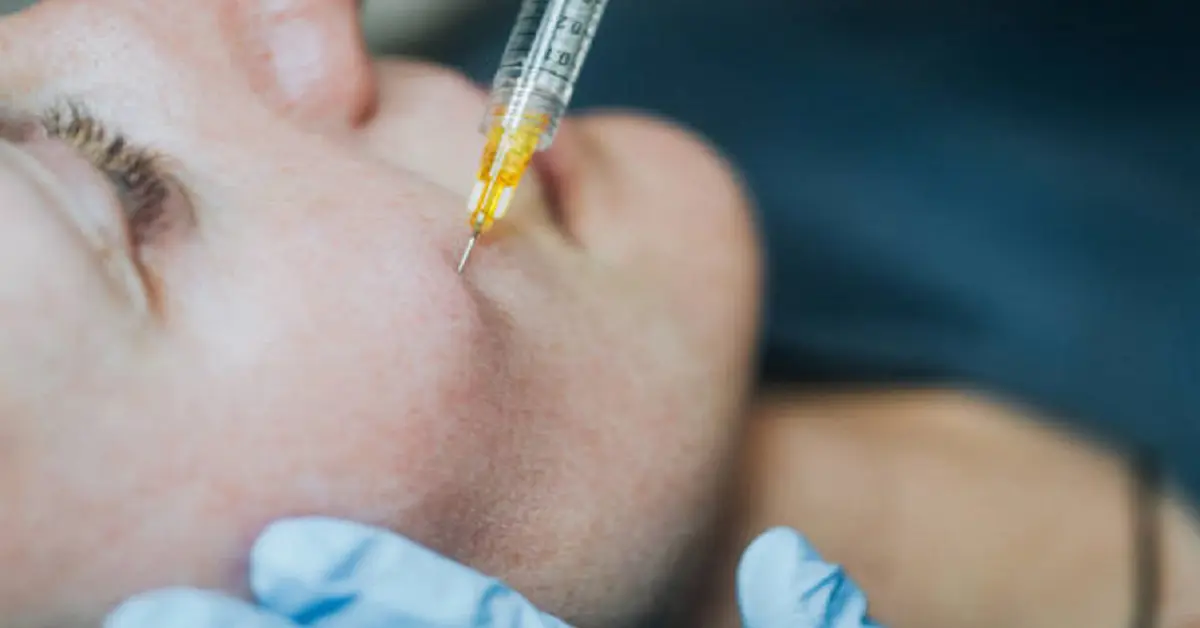Are Under Eye PRP Injections a Safe Alternative to Fillers?
The quest for rejuvenated and youthful skin has led to the development of various cosmetic procedures, each promising to address specific concerns. Among these, Platelet-Rich Plasma (PRP) injections have gained popularity for their potential to enhance skin texture and promote collagen production. Specifically, under-eye PRP injections have emerged as an alternative to traditional fillers in the pursuit of treating dark circles, fine lines, and hollowed under-eye areas.
This article aims to delve into the safety and efficacy of under-eye PRP injections in comparison to fillers, exploring the science behind the procedures and scrutinizing the potential risks and benefits.
Understanding Under Eye PRP Injections
Under Eye PRP (Platelet-Rich Plasma) injections involve the extraction of a patient’s own blood, which is then processed to concentrate the platelets. These platelets contain growth factors and other bioactive substances that play a crucial role in tissue regeneration and repair. The concentrated PRP is then injected into the under-eye area, stimulating collagen production, improving skin elasticity, and promoting a more youthful appearance.
The Science Behind PRP
Platelets are blood cells that aid in clotting and wound healing. In the context of cosmetic procedures, the growth factors found in platelets are harnessed for their regenerative properties. PRP injections capitalize on the body’s natural ability to heal and rejuvenate tissues. When injected into the under-eye area, the growth factors in PRP stimulate the production of collagen and elastin, essential proteins that contribute to skin firmness and elasticity.
Efficacy of Under Eye PRP Injections
Several studies have explored the effectiveness of under eye PRP injections. Proponents argue that PRP stimulates collagen production, improves skin texture, and reduces the appearance of fine lines and dark circles. Unlike fillers, which may provide a temporary solution by adding volume, PRP aims to address the underlying causes of skin aging and damage.
One advantage of under-eye PRP injections is the natural-looking results that develop gradually. Since the treatment stimulates the body’s own collagen production, the changes are subtle and integrate seamlessly with the patient’s natural facial features. This contrasts with fillers, which can sometimes result in a more immediate, albeit potentially noticeable, alteration.
Comparing Safety Profiles
While both under eye PRP injections and fillers are generally considered safe, it is essential to understand the unique risks associated with each procedure.
Under-eye fillers, typically composed of hyaluronic acid, are injected to add volume and fill in hollow areas. While hyaluronic acid is a substance naturally found in the body, complications may arise, such as allergic reactions, bruising, or lumps forming under the skin. Additionally, improper administration or placement of fillers can lead to asymmetry or migration, causing unintended changes in facial appearance.
On the other hand, under-eye PRP injections leverage the patient’s own blood, reducing the risk of allergic reactions or adverse responses to external substances. However, as with any injection-based procedure, there is still a potential for bruising, swelling, or infection at the injection site.
Patient-Specific Considerations
The suitability of under eye PRP injections or fillers varies based on individual factors such as age, skin type, and the specific concerns being addressed. Younger individuals with minimal volume loss and mild skin laxity may find under-eye PRP injections beneficial in promoting natural collagen production. In contrast, those with more pronounced hollowing and deep-set lines may opt for fillers to achieve a more immediate and noticeable result.
It is crucial for patients to communicate their expectations and concerns with a qualified and experienced practitioner during the consultation process. A thorough assessment will help determine the most suitable treatment approach based on individual needs and desired outcomes.
Longevity of Results
One aspect often considered when choosing between under-eye PRP injections and fillers is the duration of results. Fillers typically offer more immediate and longer-lasting outcomes, with effects lasting anywhere from six months to two years, depending on the type of filler used. In contrast, the results of under-eye PRP injections may take several weeks to manifest as the body gradually produces new collagen. While the effects of PRP are generally more subtle, they can be longer-lasting with maintenance sessions recommended at intervals to sustain results.
Cost Considerations
Cost is a significant factor for many individuals considering cosmetic procedures. While the upfront cost of under-eye PRP injections may be lower than that of fillers, the need for multiple sessions over time can contribute to a cumulative expense. Fillers, despite being more expensive per session, may be perceived as a cost-effective option due to their longer-lasting results and potentially fewer required maintenance sessions.
Conclusion
The decision between under eye PRP injections and fillers is a nuanced one that depends on individual preferences, concerns, and expectations. Both procedures have their merits and potential risks, and the choice should be made in consultation with a qualified and experienced practitioner. Under-eye PRP injections offer a natural approach to skin rejuvenation, stimulating the body’s collagen production over time. Fillers, on the other hand, provide a more immediate and noticeable outcome by adding volume to the under-eye area.
Ultimately, safety and efficacy should be the top priorities when considering any cosmetic procedure. Patients should be well-informed about the procedures, their unique characteristics, and potential risks. A thorough consultation with a qualified medical professional will ensure that the chosen approach aligns with the patient’s goals and yields the desired results while prioritizing safety and well-being.
